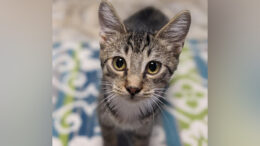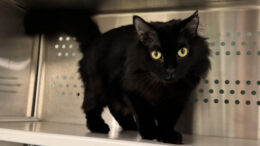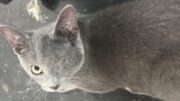Quirky pumpkins are in vogue for fall decorating, including those covered with warts. Find out the causes for these bumpy beauties in this article.
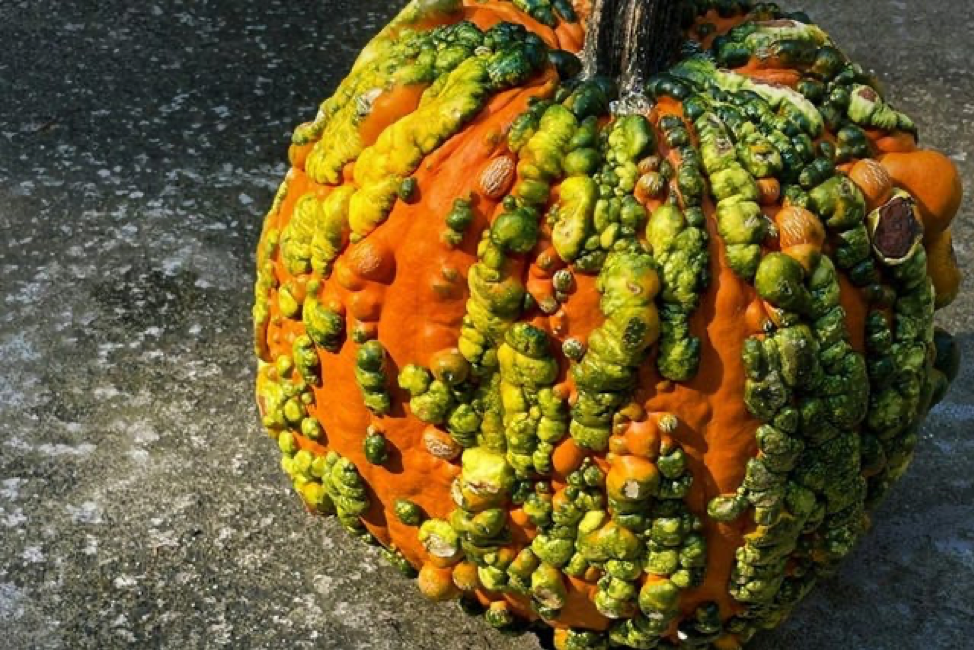
Warty pumpkin. Jan Canty on Unsplash.com. CC0
There is a growing trend to embrace the unusual when it comes to fall pumpkins. Colors such as white, gray, and green depart from the ubiquitous orange pumpkin color, and miniature sizes and flattened shapes are highly sought after. Pumpkins sporting warts and bumps are another hot trend. But are warts on a pumpkin really desirable? Are they a recent development? Let’s look at some of the reasons for warts on pumpkins.
Note: Pumpkins and other winter squash, such as acorn squash, Hubbard squash, and butternut squash, are in the genus Cucurbita. The species names of the vegetables we call pumpkins are Cucurbita pepo, Cucurbita argyrosperma, Cucurbita maxima, and Cucurbita moschata. There are many, many cultivars, both heirloom and recently developed.
Unintended Causes of Warts on Pumpkins
Viruses
Some warts on pumpkins are due to mosaic viruses, which can also cause mottled coloration and stunted growth. Aphids are usually the culprit for transmitting mosaic viruses in pumpkins. Although mosaic viruses mean the fruit will be smaller and unusual looking, they don’t affect the shelf life or edibility of mature pumpkins. Some pumpkins affected by viruses may make it to the market as novelty specimens.
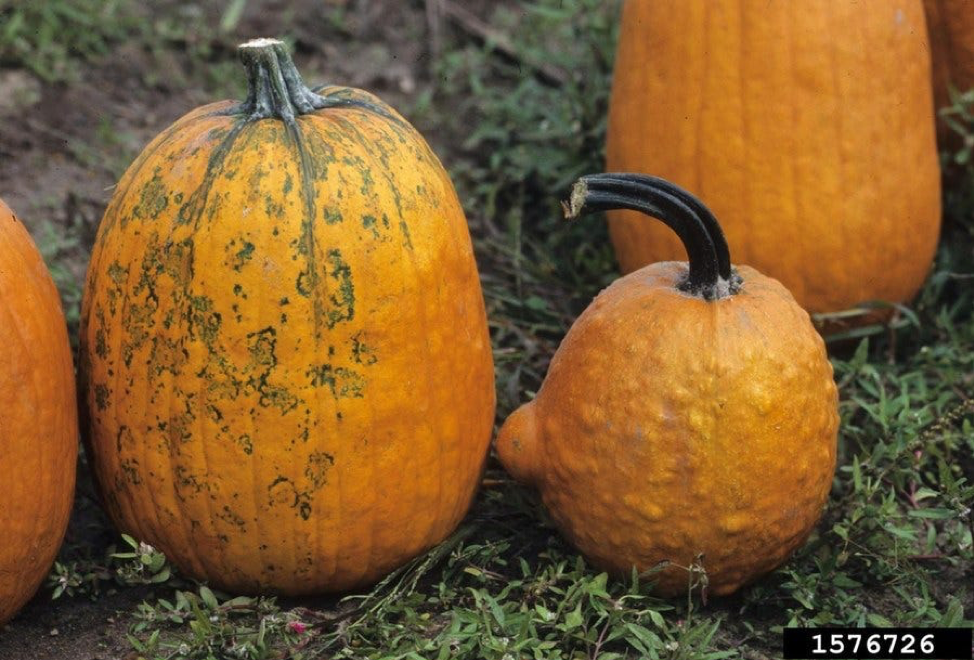
Mosaic viruses. Gerald Holmes, Strawberry Center, Cal Poly San Luis Obispo, on Bugwood.org. CC BY-NC
Edema
Edema is an accumulation of water within the pumpkin, caused by wet and cool weather conditions. Excess water creates enlarged cells that burst, causing the tissue to heal and create an enlarged, corky area on the skin. Edema usually affects the part of the pumpkin lying on the ground. Warm and dry conditions will mitigate edema, but the warts on the skin will persist.
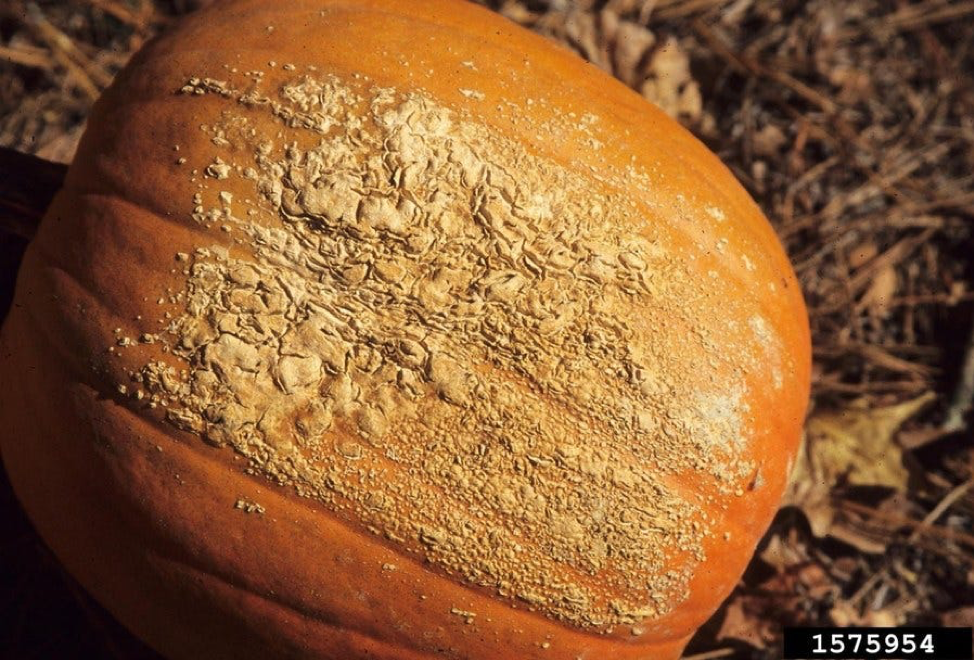
Pumpkin affected by edema. Gerald Holmes, Strawberry Center, Cal Poly San Luis Obispo, on bugwood.org. CC BY-NC
Bacteria
Lydia Tymon, a plant pathologist at Washington State University, points to Pseudomonas syringae as a bacterial pathogen that creates wounds in the skin of pumpkins. Under the best circumstances, this bacterium causes warty scabs, giving the pumpkin character. But these scabs can burst, allowing additional pathogens to enter, causing the crop to rot. If you want to know more about this bacterium, see WSU Insider
Insects
Insects, such as cucumber beetles, may feed on the skin of developing pumpkins, leaving wounds that heal as bumps and scars.
Warty Heirloom Pumpkins
The most important answer to what causes warts on pumpkins lies in the nature of pumpkins themselves. Before they were bred to be smooth, symmetrical canvases for Jack-o’-lanterns, pumpkins had natural bumps and indentations. These tendencies led to heirloom varieties that are the predecessors of today’s hybrid curiosities. Gardeners can easily find the seeds of these heirlooms for sale and grow them at home.
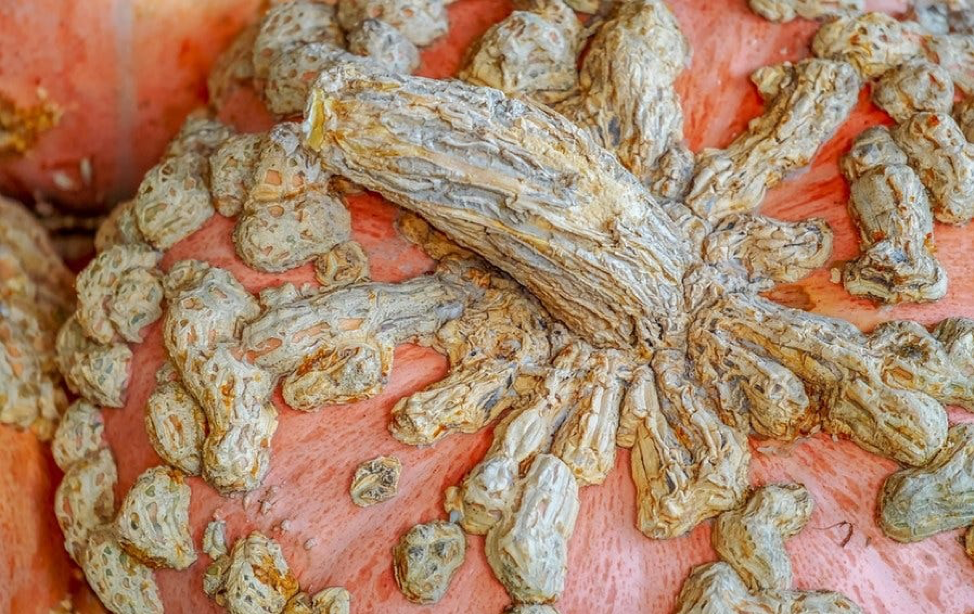
‘Galeux d’Eysines’. Couleur on pixabay.com. CC0
‘Galeux d’Eysines’
The variety name of this Cucurbit maxima translates to “scabby from Eysinses.” A more appealing moniker is “peanut pumpkin,” because the abundant, crusty bumps on the skin resemble peanut shells. It was developed in the mid- to late-nineteenth century, but was not introduced to America until 1996, when botanical author, artist, and Seed Saver Exchange member Amy Goldman saw it at a fair and collected seeds. In addition to making a striking centerpiece,’Galeux d’Eysines’ is not stringy and is recommended for soups and stews.
‘Marina di Chioggia’
Another variety of Cucurbit maxima, ‘Marina di Chioggia’ is a flattened turban shape with pronounced bumpy ridges. Thought dark green when mature, the flesh is a pleasant golden-orange. Named for a seaside village near Venice, this squash is reported to be excellent when used in creating Italian dishes, such as stuffing ravioli or making gnocchi dough.
‘Musquee de Maroc’
Also called Moroccan musk squash, this variety of Cucurbit moschata was introduced to the United States from Africa in 2014. This variety has a classic pumpkin shape and ribs, punctuated with pronounced clusters of green-orange knobs. It is resistant to drought and squash bugs and has a melon-like flavor.
Make Way for SUPER FREAK™ Pumpkins
Siegers Seed Company developed the SUPER FREAK™ series of charming, warty pumpkins in the early 2000s. (Stokes® Seed now owns Siegers Seed Company.) Many rounds of selective cross-breeding created these hybrids. The SUPER FREAK™ series hybrids described below belong to the Cucurbit pepo species, the same species as the traditional orange Jack-o’-lantern.
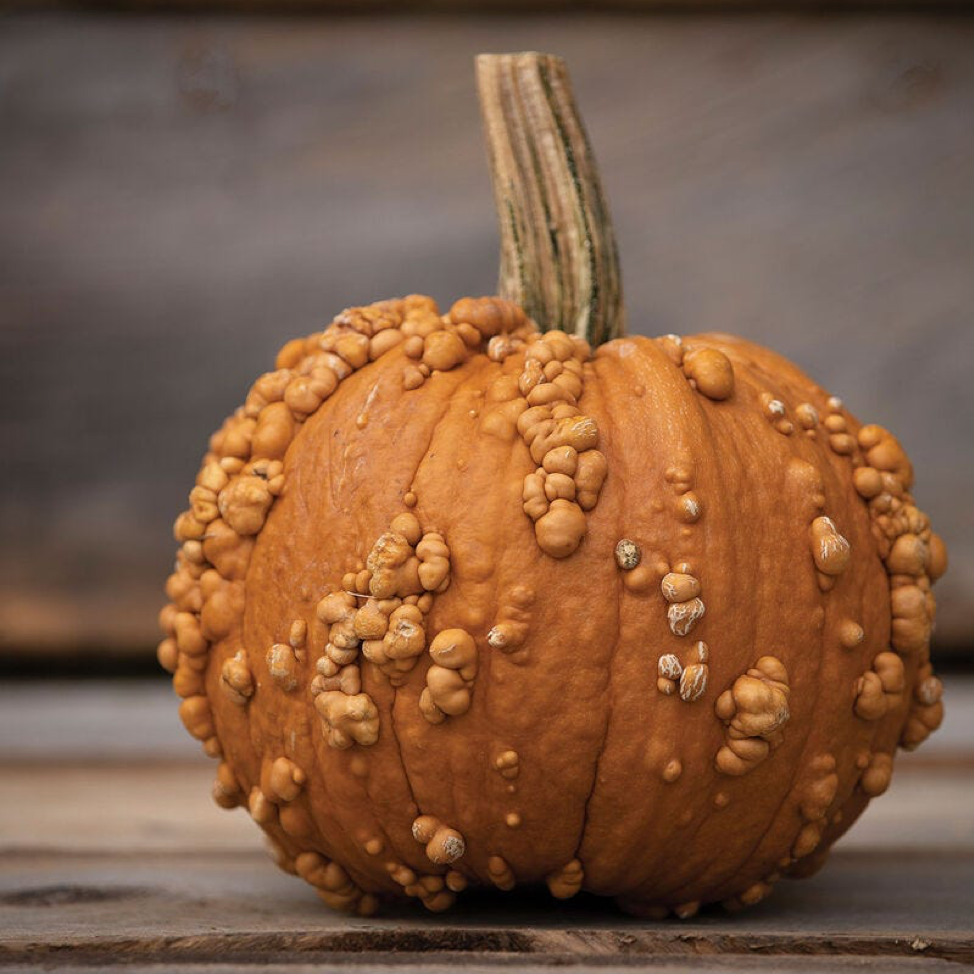
One of the SUPER FREAK™ Series, ‘Grizzly Bear’. Courtesy of Johnny’s Selected Seeds
‘Baby Bumps’ are small and orange with scattered warts. Stokes Seeds describes this as a small, pie-class pumpkin.
‘Goose Bumps’ and ‘Goose Bumps II’ are smallish (about 10-pound) pumpkins in a classic orange color with heavy, green-tinged warts. Goose Bumps II is an improvement on Goose Bumps.
‘Grizzly Bear’ is a warm tan in color, spherical in shape, with plenty of warts.
‘Knuckle Head’ is predominantly pumpkin-orange with a moderate number of bumps and warts. Fruits are 12 to 16 pounds.
‘Scarface’ is a more upright version of Goose Bumps. The name and shape invite Jack-o’-lantern face carving!
Also, keep an eye out for gourds in the SUPER FREAK™ series, ‘Gremlins’ and ‘Goonies’.
If you are looking for the ideal warty pumpkin to grow, consider your goal. Although the SUPER FREAK™ pumpkins are billed as appropriate for cooking, their standout feature is their dramatic appearance. On the other hand, the heirloom varieties featured here may be just as eye-catching, but their true strength lies in their long-valued flavor and culinary versatility.
Author
Lois Miklas
Former Area Master Gardener Coordinator
Pennsylvania State University
Fall in Love with Pumpkins, Warts and All







